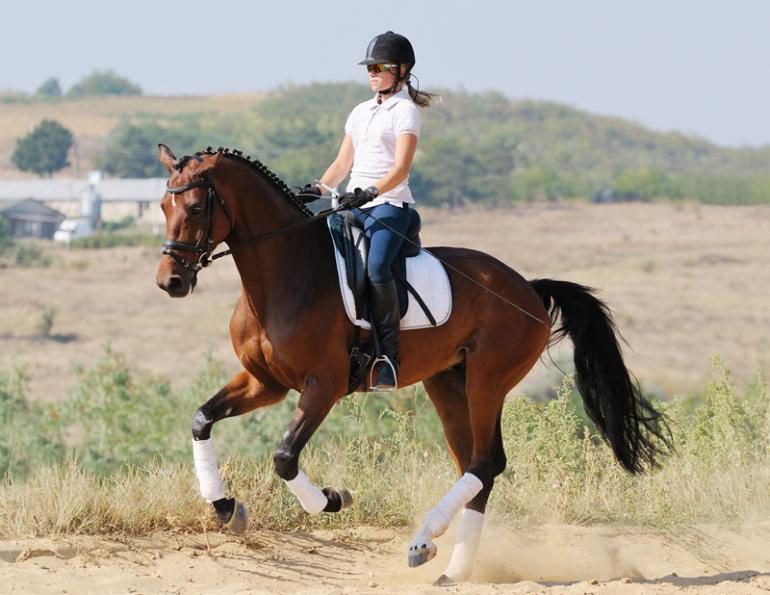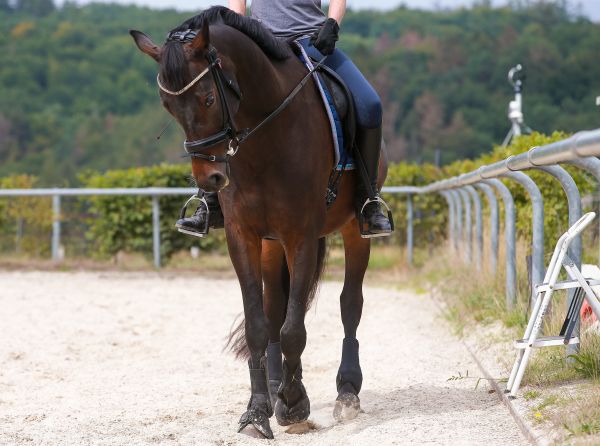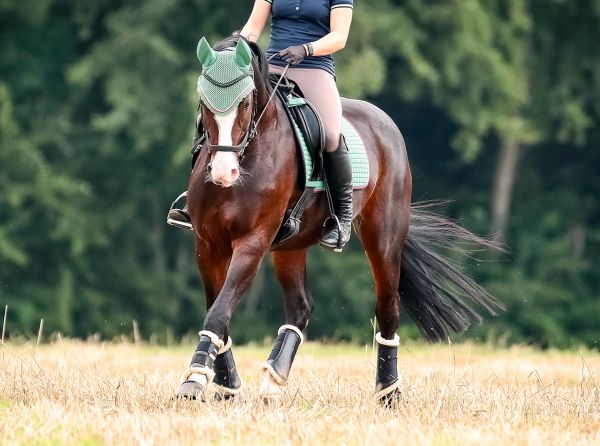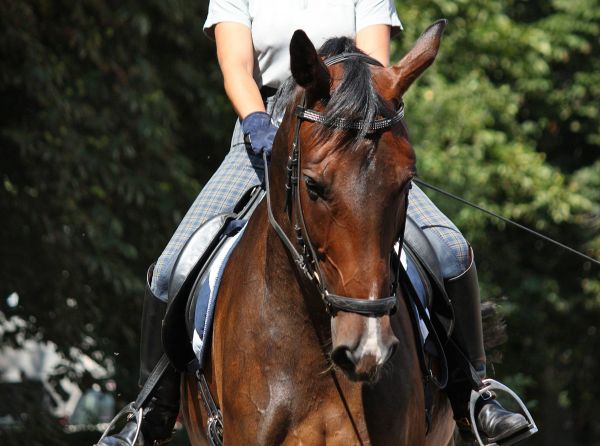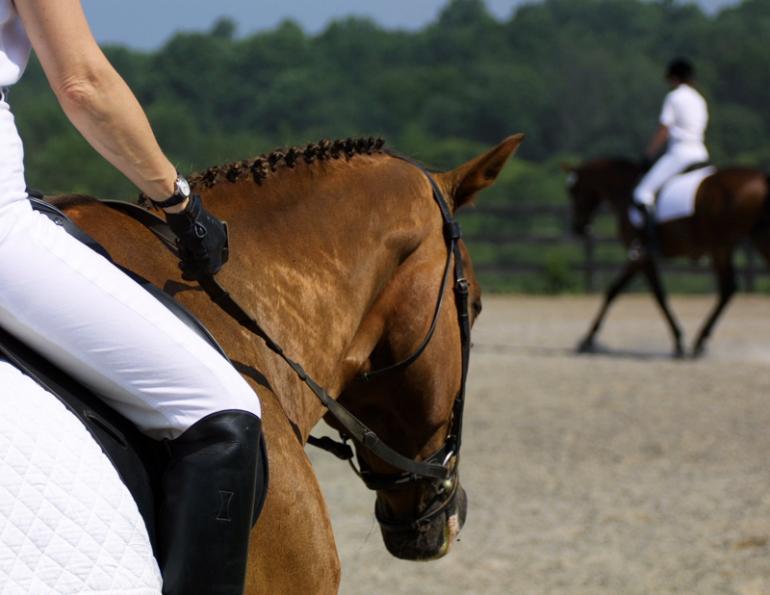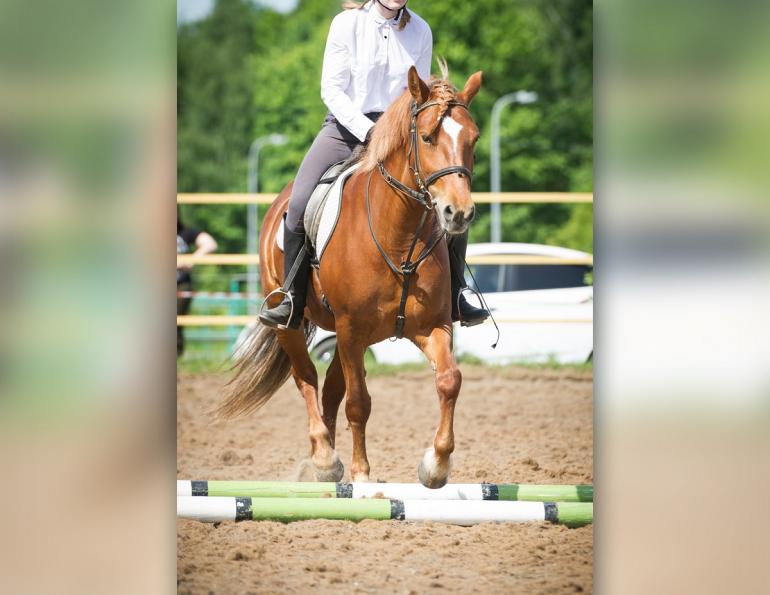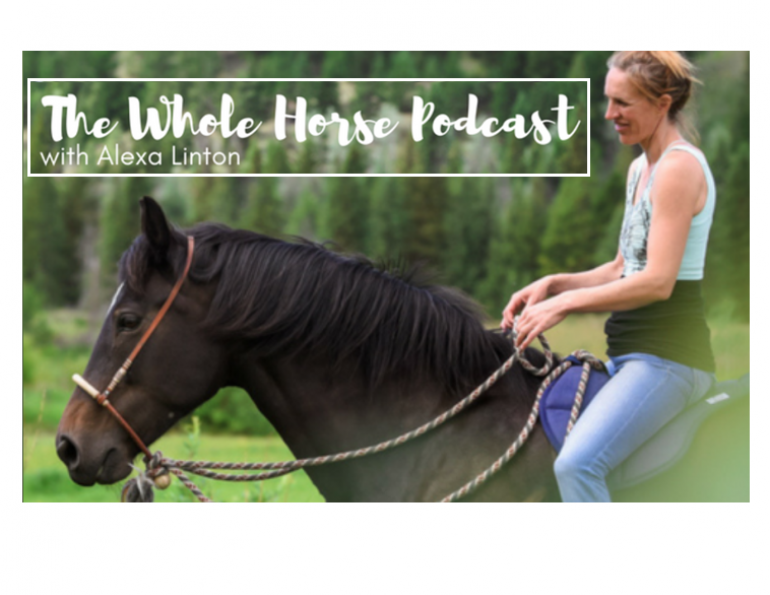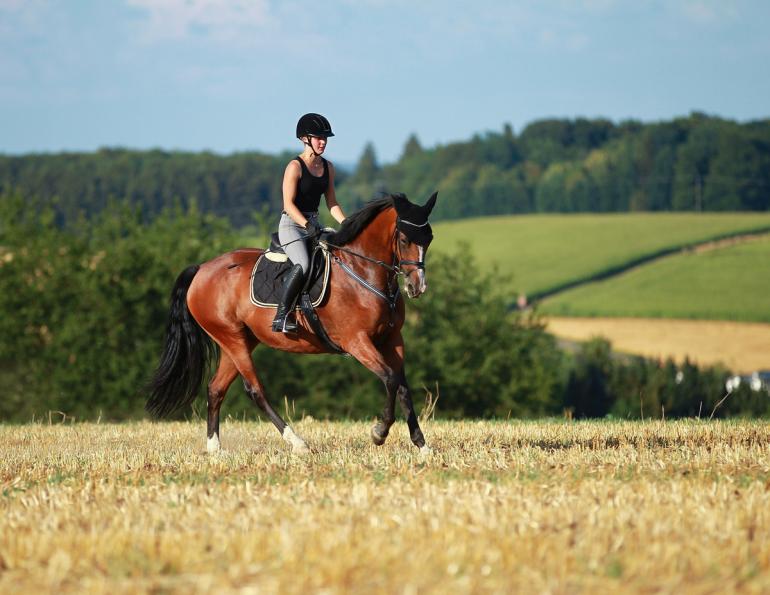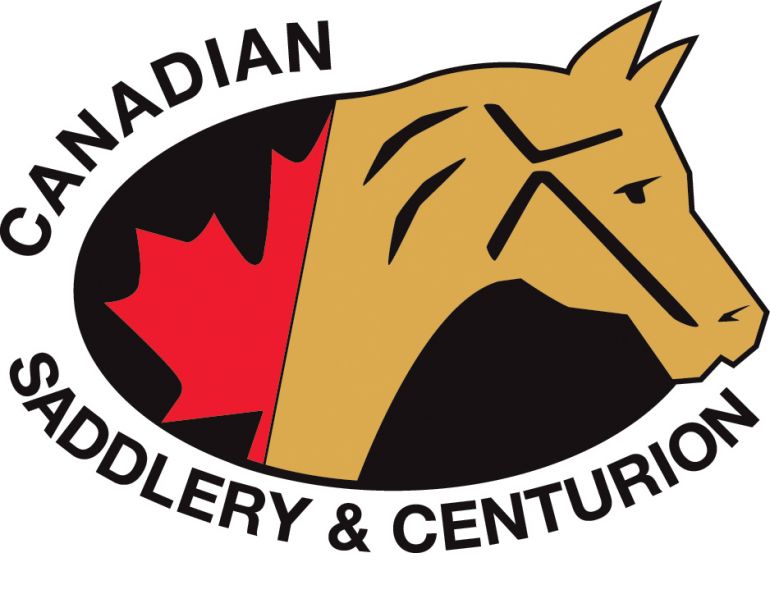By Jec A. Ballou
Gulp. I tried to work up the nerve to let the reins out another inch or two as we cantered around, but I was having a really hard time doing it. First of all, my horse might run off. Second, if I got lucky and she did not run off, she would definitely fall on the forehand and careen about like an untrained plodder.
A conversation with Dr. Gerd Heuschmann kept playing through my mind, during which he insisted on the value of galloping dressage horses while riding in a light seat with long reins. He referenced several research studies that showed the full, powerful contraction-relaxation cycle of the horse’s longissimus dorsi muscle when galloping. This muscular effort along the back resolves tension and bunching that builds up from the demands of schooling. It also stimulates relaxation in the gluteal muscle group, which has a reflexive effect on the rest of the extensor chain.
In other words, it does a lot of positive things.
“It keeps the canter pure,” Heuschmann said, conviction filling every word. “The back is released, and the beat becomes regular.”
I certainly knew what he hinted at in terms of the challenges we all face with irregularity of rhythm in the gaits. We have all ridden — and tried to fix — walks, trots, and canters that are rough, varying in speed, and generally unbalanced. It is frustrating work. And maybe the task had been taking me longer than it needed to, given that I wasn’t using this all-important tool of galloping?
Dr. Heuschmann raised his palms in the air like he planned to sweep dust particles forward.
“Ba-da-buhm. Ba-da-buhm,” he repeated, emphasizing the precision of three clear beats. His point: the horse’s back must be relaxed and rounded for the gaits to move through with purity. Galloping does this. “One-two-three. One-two-three.”
Finally I did ease the reins out a bit more, and surprisingly nothing awful happened. I let them go a little longer. The horse moved bigger, but far better, across the ground. Instead of throttling me around, her back softened and I was able to sink down in to it. Her beat became so clear that I could hear it with every bounding stride. Ba-da-buhm. Ba-da-buhm.
All the other horses since have responded just as well. Needless to concede, I’ve become a convert to the merits of galloping. I’ve adopted that same wistful expression that I saw as Dr. Heuschmann urged any rider who would listen that we must all go gallop our horses.
So, now I urge you: try to keep a weekly practice of galloping for a few minutes. It does not need to be a white-knuckled, racing speed. Galloping is defined simply as a strong canter with an emphasized moment of suspension when all the feet are off the ground. Think of it as a moderately brisk canter, one where you cover a good amount of ground each stride. Let the horse stretch his neck out, move your elbows forward and backwards like a jockey. Lighten your seat, look up.
And have fun!
To read more by Jec Ballou on this site, click here.
Main photo: Shutterstock/Pirita



